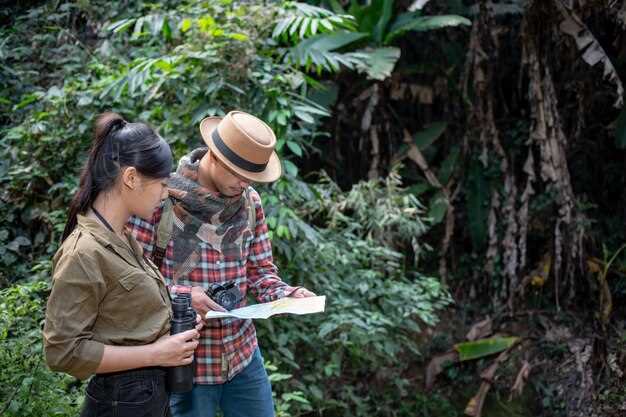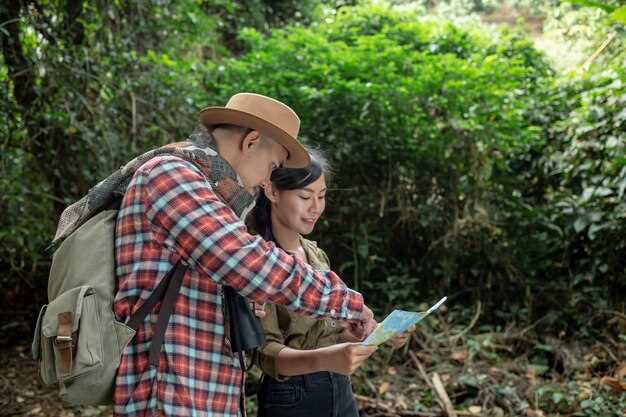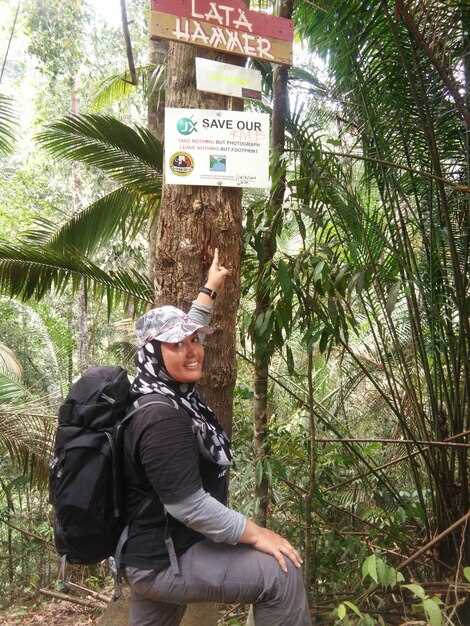Recommendation: Choose Chiang Mai Jungle Trekking Guide 2025 for relief from uncertainty and a premium, well-structured plan that starts with daytime safety tips and carefully selected tours.
Three signature experiences shape the program: a full-day, leisurely trek to a mountain cliff overlook and a hidden waterfall; a half-day, easiest route along a river with a calm paddle segment; and a premium caving excursion that reveals limestone formations with safe navigation and helmet lighting.
Safety protocol centers on licensed local guides, a concise pre-trek briefing, hydration plans with ample water, insect protection, sturdy boots, and a compact first-aid kit. Daytime departures maximize visibility and maintain a relaxed pace suitable for all fitness levels.
What to bring and wear: moisture-wicking layers, a lightweight rain shell, sun protection, a headlamp for caves, a helmet for cliff sections, and a small dry bag. We offer on-site gear rental and partner with reliable suppliers to keep equipment at the least weight and full reliability.
Timetable and visits: Weekday departures concentrate on cooler morning hours; weekend tours add cultural visits to local communities and traditions-rich spots, with a wake-up call at dawn to catch a sunrise over nearby peaks. For families, we provide a slower, leisurely option that keeps the pace comfortable and enjoyable.
Booking details: packages range from 6–7 hour single-day treks to multi-day itineraries; group sizes stay small (6–8 participants) to preserve safety and personal guidance with the least disruption. Basic treks start around $120 per person, with premium cave tours and private itineraries available at higher tiers. All options include a licensed guide, safety gear, and a clear brief on trail difficulty and water sources.
Chiang Mai Jungle Trekking Guide 2025
Start with an easy, family-friendly loop near the foothills to pace yourselves; friendly, knowledgeable guides tailor the pace for children and beginners, especially on warm days.
Wear long sleeves, bring water, and apply mild sunscreen; keep a steady active rhythm while tracing shaded trails; watch the waters and spot birds along the way.
Along the route you may reach an ancient temple area with a stupa and local craft stalls; hmong artisans perform performances and share traditions while you observe the surrounding natural scenery.
Starting points are easy to reach from Chiang Mai Old City; taxi transfers arrive at the trailhead, and guides meet you there to begin on time. After the walk, a mild curry snack at a shaded rest area awaits, and families can cool off at a nearby waterpark to refresh before heading back; everything is prepared to minimize fuss.
| Trail | Distance (km) | Difficulty | 하이라이트 | Best Season |
|---|---|---|---|---|
| Forest Edge Easy Loop | 3.2 | Easy | Shaded canopy, small waterfall, stupa overlook, hmong crafts | Nov–Feb |
| Waterfall Way | 5.5 | Easy–Moderate | Multiple cascades, natural pools, family-friendly pace | Nov–Feb |
| Stupa Ridge Walk | 4.0 | Moderate | Ridge vistas, ancient stupa sites, king legend | Cool season |
| Hmong Village Trek | 6.2 | Moderate | Culture stop, traditional houses, local curry tasting | All year |
Best Trails, Safety Tips & Tours
Book a two-day, local-guided trek from chalermprakiat to access deeper jungle trails, river crossings, and fresh sights at dawn.
Three best trails balance scenery and safety: a rainforest loop through evergreen canopy (6–9 km), a river-edge path with a shallow rafting stop, and a hilltop circuit with distant views toward a nearby village and the chalermprakiat bazaar region.
Safety tips: Trek with a licensed guide, verify gear, and carry water filtration, a small first-aid kit, and a windproof layer. Check the forecast; windy ridges can appear quickly after rain. Cross rivers only with guide assistance, and stay on visible parts of the trail. Watch for slippery rocks and muddy patches after storms. Respect buddhism practices at temples you may visit along the route and mind local customs. When conditions shift, adjust pace and consult your guide. Be mindful of dogs along trails and away from livestock areas.
Getting plans right means booking early, especially on weekends. Choose a half-day intro if you’re visiting with kids, or a two-day trek for deeper immersion. Even with kids, start with a short, mild route to build confidence. For a safe pace, select trails with mild elevation gains and clear signage; your guide will tailor the route to your fitness and weather. This itinerary begins near a quiet street by chalermprakiat and ends at a riverside spot where you can reflect on the past.
Selecting tours helps cover best parts of the jungle. Look for operators who include a river segment, a stop at a local bazaar, and a chance to see traditional villages. A typical two-day option covers a range of scenes–from fresh river banks to lush canopy–so travelers who have traveled here before get a real feel for the area and its people.
Visiting during dry-season mornings offers clear sights and cooler air; aim for mild weather in November through February. If you travel in the monsoon, plan for extra gear and longer travel times. For added thrill, ask about rafting or canoe options on calm river bends, where allowed and safe with a guide.
After the trek, stroll the bazaar street by chalermprakiat to sample fresh street foods and buy local crafts, or simply watch a sunset over the river spot where guides wrap up the day. This approach keeps your Chiang Mai Jungle Trekking 2025 experience real and balanced, with safety at the center of every plan.
Top Trails by Difficulty and Scenery in Chiang Mai
Begin with the Doi Suthep-Poi Nature Trail, a 3.5 km loop that takes about 1.5–2 hours and climbs roughly 260 meters. You’ll pass mossy turns, sweeping viewpoints over the mountains, and a sacred stupa near the temple complex, making it a perfect first step for those doing their first Chiang Mai trekking day. The route is family-friendly, easy to pace, and shines whether you visit on a clear morning or after unexpected rain.
Easy option: Mae Sa Waterfall Trail, a 2 km round trip that usually takes 45–60 minutes. The path follows a shaded stream with several cascades and bathing pools along the way, and you’ll have plenty of chances to pause for a picnic on a rocky bank that sometimes feels like a beach after a monsoon rain. It’s a great warm-up before you dive into longer sessions in nearby regions.
Moderate pick: Samoeng Forest Trail toward Ban Pha Phueng offers 7–8 km of winding track with 400–600 meters of elevation gain. The route rolls through pine and broadleaf forest, with lookout posts that reveal villages and farms in the valley below. You’ll pass by bamboo groves, a cultural street in Samoeng town, and a few boutique guesthouses where you can refuel with local noodles or a simple dinner after the hike.
Hardest option: Doi Inthanon Peak Trail, 6–9 km with 700–900 meters of ascent, typically 4–5 hours round trip. Start before sunrise to catch a true alpine feel, then push up to the peak where two pagodas stand beside a stupa-style lookout. The mossy forest gives way to granite outcrops, and you’ll get sweeping views across surrounding regions. If you’re lucky, the sky opens after rain and the air feels crisp, making the climb feel worth every step.
Elsewhere in the area, consider a longer day that combines Nam Tok Mae Klang or the Hong ping pools with a stroll through a nearby farm and a quiet Muay Thai-style cooldown in a local gym. Whether you’re chasing a sacred moment near a hillside temple or chasing a dramatic waterfall in the late afternoon light, plan for flexibility: the best trips come from listening to the forest, not insisting on a rigid schedule. If you travel with a local Khun guide, they’ll point out rock shelves, secret lookouts, and unexpected shortcuts that cut a kilometer or two and reveal hidden streams and streamside stone baths.
What to Pack for a Jungle Trekking Day

Pack a 20–25L daypack with a durable rain cover; balance your load so half is clothing and half is gear, plus a tiny dry bag for valuables.
- Clothing and protection
- Two moisture-wicking shirts, two pairs of quick-dry shorts or lightweight pants, a lightweight fleece, and a compact rain shell.
- Hat with brim, sunglasses, breathable socks, and sturdy hiking shoes with good grip; opt for water-friendly options when crossings are likely.
- Insect repellent, sunscreen, and a compact first-aid kit with blister care; avoid mistreated trails by sticking to marked paths.
- Hydration and nutrition
- Water: at least 2 liters per person; use a bottle or hydration bladder and refill at permitted streams.
- Snacks: nuts, dried fruit, energy bars, and a small piece of chocolate for a taste boost; plan a mid-morning break for energy.
- Electrolytes: sachets or tablets; pack in a tiny pouch for easy access during hot conditions.
- Navigation, safety and gear
- Map and compass or offline GPS; keep a charged phone with a power bank and emergency contacts.
- Headlamp, whistle, multipurpose knife, and a compact emergency blanket; a small dry bag protects electronics.
- Based on route conditions, adjust layers and gear to keep the load balanced and comfortable; when selecting gear, prioritize breathable fabrics and durable zippers.
- First-aid kit with jungle-specific items and know-how to handle heat issues or bites; know when to seek help from guides or rangers.
- River and water activities
- PFD if required by the guide; helmet for river sections; waterproof cases for phone/camera; dry bag for valuables.
- For kayaking or tubing portions, include a compact pump or throw bag and ensure a properly fitting PFD.
- Wear quick-dry clothing and water shoes; the sun’s glare on waters calls for sun protection and grip to prevent slips.
- Smart packing tips for the day
- Label gear and split your load so you carry things you need most often in accessible pockets; couples can share a compact tarp and snacks to reduce weight.
- Look for gear with reliable waterproof zippers and rain covers that shine in sudden showers; a tiny rain cover on the pack helps keep gear dry.
- If you’re traveling with a companion, join a short rest stop to rehydrate and check gear together; journeys through different terrains benefit from shared breaks.
- Sanctuaries, gates and week planning
- Respect signage in sanctuaries; stay on marked trails and keep noise to a minimum; plan your day around park gates opening times.
- If your plan spans a week and several destinations, keep a simple daily breakdown and prepare for bus or gate transfers; pack a change of clothes in a day bag for quick transitions.
- Destinations vary in difficulty–include a couple of easier hike options and a major trail to balance your day’s pace and safety.
Seasonal Weather and Trail Conditions in 2025

Recommendation: Book a guided trek during the cool-dry window, November through February, to maximize trail conditions and safety for visiting groups.
In 2025, daytime temperatures in Chiang Mai typically range from 20°C to 28°C during November–February, with night temperatures around 12°C–18°C. From March to May, expect 28°C–35°C in the afternoons and rising humidity. The rainy season spans July–October, bringing frequent showers and total monthly rainfall often in the 150–300 mm range, which makes some sections slippery.
Dry-season trails stay compact and firm for walking; early starts beat heat and dust. In late February and March, dust can reduce visibility on exposed ridgelines. Monsoon months create muddy sections and occasional fast-flowing streams; carry a compact rain shell and footwear that drains well. For a safer option, choose shorter legs or switch to tubing on river sections when water levels permit.
Useful packing includes a lightweight rain jacket, breathable trekking shirts, sun hat, sturdy hiking sandals or boots, insect repellent, and a small first-aid kit. A well-being kit with electrolytes helps performance in warm hours. Watch your footing on natural slides and avoid steep slopes after rain; keep to well-marked spots and check maps before crossing streams. If you travel with a local guide, you would get timely safety tips and route choices.
Respect buddhist customs at temples you visit along the route: cover shoulders and knees, remove shoes at entryways, and speak softly near sacred spots. Monks and nuns are common in hill tribes; wake early for sunrise views and chats with locals, which adds cultural depth without disturbing quiet villages and their traditions. The least intrusive approach keeps well-being high for both visitors and the tribe you pass through.
East-facing trails near the borders to the east offer striking sunrise spots and dramatic valley views. The range of trail options includes Mae Wang, Doi Suthep foothills, and Chiang Dao routes; prices for guided tours vary by group size and season, with packages that include transport and hotel pickups. Youre will find several compact itineraries that could be perfect for first-time visitors.
Hotels near trailheads provide convenient access; if heat or rain disrupts plans, switch to a quiet village outing or a cultural site visit for a compact half-day. As an extra option, tubing offers a cool alternative on warm afternoons. Prices range with seasons, but many operators offer excellent value for group sizes; you can book a day with a local guide who knows safe routes and water depths.
To plan effectively, check a 48-hour forecast, wake early, and carry a compact dry bag for electronics. Include a lightweight spare layer and sun protection. Walking routes can change quickly with rain, so stay flexible and use an option that reduces exposure on exposed ridges. When you visit, treat temples and monks with respect, and choose a spot that supports sustainable visiting experiences.
Safety Tips for Wildlife, Heat, and River Crossings
Begin at first light with a light, quick-drying layer and a compact first-aid kit. This setup reduces exposure to heat and keeps you ready for scrapes along the trail.
Keep a safe distance from wildlife, never feed animals, and stay on marked paths to minimize encounters with snakes or insects. Use a long-wearing repellent, wear breathable long sleeves and sturdy boots, and rely on a local english-speaking guide who can identify risks and point to spots where animals are active. Carry a whistle as backup in case of separation.
Heat management includes sipping water or electrolyte drinks every 15-20 minutes, resting in shade during peak hours, and wearing breathable fabrics plus a hat and sunscreen. Plan transitions to avoid fatigue in the range of temperatures typical for the regions we trek, and check reviews from past trips to set realistic expectations about humidity and heat.
River crossings require scouting the point, watching current and water depth, and avoiding crossings when depth exceeds knee height or the flow looks fast. Avoid bathing in rivers after rain; currents rise quickly. Cross with a buddy or guide, secure valuables in a dry bag, wear shoes with good grip, and distribute weight to prevent slips. If a crossing involves a local raft or marked service, boarding with the guide is the safer option; for Mekong-adjacent rivers, coordinate with the crew at a known location and follow instructions. Always choose a spot with clear safety lines and consider the overall distance and effort before moving forward.
At villages and trailheads, respect street vendors and nearby farms, sample regional tastes at a local restaurant, and buy tickets only from official outlets. Note official locations and borders of protected areas to plan routes. Seek grand viewpoints and incredible vibes, and avoid disappointment by checking past reviews and the pace of crowds. Couples and families often prefer shorter, well-marked routes, while more adventurous travelers can explore regions and spots along mekong-adjacent days. For the national parks in this area, ask guides for the best routes within borders and plan around peak performances to minimize disruption to wildlife.
Guided Tours vs. Independent Trekking: Booking Tips
Theres a spot where guided tours shine for first timers: safety margins, local knowledge, and a ready itinerary to keep hikes on track.
Guided options suit lovers of nature, especially those seeking magnificent views, dependable pacing, and plans that go beyond the basics.
daytime departures typically run 4-6 hours, include water and snacks, and handle permits, safety briefings, and route notes.
To book, compare owner-operated outfits with larger tours, read recent reviews, ask for the operator’s ethical policy, and request a sample itinerary that highlights inthanon and kamphaeng routes.
For independent treks, carry a current map, a GPS backup, and a local emergency contact; for the easiest self-guided days, choose clearly marked trails and avoid river crossings at high water. Some stretches feel like a beach as you cool off by calm river spots and pools for soaking.
march weather often means warmer days and longer terrain exposure, so mention your fitness level when booking to tailor pacing and avoid overdoing it. If delays occur, avoid anger by communicating with the owner.
Beyond the classic loops, parks near the options above deliver rivers, slides, and soaking spots that reward thoughtful planning and a mindful pace. If traveled here before, you’ll spot improvements and choose the route that fits.

 Chiang Mai Jungle Trekking Guide 2025 – Best Trails, Safety Tips & Tours">
Chiang Mai Jungle Trekking Guide 2025 – Best Trails, Safety Tips & Tours">
